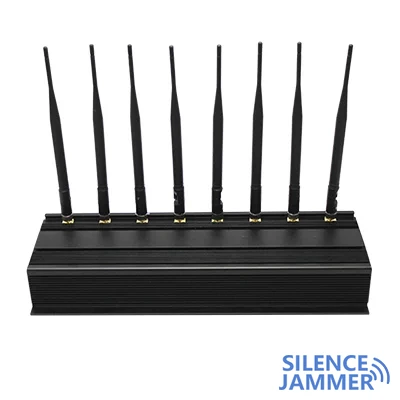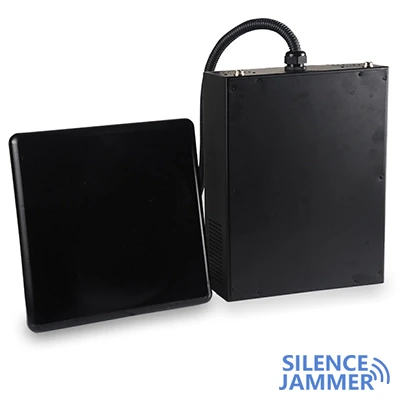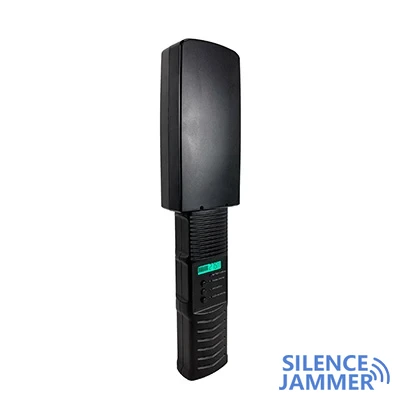The importance of signal jammers in the modern battlefield
Radio jammer blockers have become key equipment on the modern battlefield. IEDs are one of the most deadly threats faced by soldiers in war, especially in battlefields such as Iraq and Afghanistan. IEDs can be detonated in a variety of ways, such as mobile phones, radio remote controls, and even car keyless entry systems. The main function of signal jammers is to interfere with these wireless signals, rendering IEDs ineffective and thus providing life protection for soldiers.
Working principle and application of jammers

These jammer devices work by emitting strong radio waves to block the remote control signals of IEDs, making them unable to be triggered. They can be installed on vehicles or carried in soldiers' backpacks to form an electronic protective barrier. Once a vehicle or soldier enters the range of an IED, these signal jammer blockers will actively block the signal, making the bomb unable to be remotely detonated.
Development of Electronic Warfare Technology and Military Cooperation
The widespread use of radio-controlled improvised explosive devices, especially in the Iraq War, has prompted the military to increase its investment in electronic warfare technology. Northrop Grumman and other defense contractors have worked closely with the military to develop systems such as CREW (Counter-RCIED Electronic Warfare). This system can effectively protect combatants and reduce the success rate of IED attacks.
Today, the military's electronic warfare equipment has become more mature and reliable in jamming remote-controlled IEDs. With the advancement of technology, radio jammers can not only counter radio-controlled improvised explosive devices, but also avoid jamming their own communication systems. These improvements have significantly enhanced the battlefield survivability of soldiers.
Demonstration of the role of jammers in soldier exercises
Soldiers must receive systematic CREW equipment operation training before deployment. The CREW training course covers multiple aspects to ensure that trainees can effectively use and maintain related equipment when facing the threat of radio-controlled improvised explosive devices (RC-IEDs). The specific training content includes the following main aspects:
1. Theoretical teaching of equipment components and functions
- The trainees first learn the basics of the CREW system through classroom teaching, including the different components of the equipment, principles and their functions.
- The teaching content covers how to use the CREW system to interfere with the enemy's radio signals to prevent the remote detonation of RC-IEDs.
- The theoretical part also introduces the system's configuration, operation, and applicability in different environments.
2. System Maintenance and Troubleshooting
- The training focuses on daily maintenance of the equipment, including inspection, cleaning, and repair.
- Participants learn how to identify and resolve equipment failures that may occur during operation to ensure that the CREW equipment remains efficient in a battlefield environment.
- The course also covers how to quickly handle equipment problems under battlefield conditions to restore the normal function of the system in a timely manner.
3. Practical Training
- Participants participate in practical operations to learn how to deploy and operate the CREW system to perform a variety of tasks, such as detecting, jamming, and responding to enemy signals.
- The practical training simulates a variety of battlefield environments to help participants become familiar with the operation procedures of the equipment.
- The practical part requires participants to use the CREW equipment in a variety of tasks to ensure that it can respond to RC-IED threats in different combat scenarios.
4. Battlefield Applications and Exercises
- Participants learn how to use the CREW system in combat through training exercises that simulate actual battlefields.
- Exercise scenarios include working in conjunction with other forces and learning how to minimize interference with friendly communications.
- Participants are also trained on how to respond quickly and make decisions in emergency situations.
5. Latest Threat Analysis and Response
- During the training, trainees will also be exposed to the latest RC-IED threats and their evolving technical means.
- Engineers and mentors will guide trainees on how to adjust CREW equipment to deal with the latest enemy signals and electronic threats.
Ongoing technological competition: enemy response strategies
However, although radio signal jammer technology has made great progress, the enemy is still constantly looking for new ways to attack. For example, when it was found that radio-controlled IEDs were increasingly difficult to successfully detonate, insurgents began to turn to other detonation methods, such as using cable-connected triggers or devices accidentally activated by the victims themselves. This shows that the struggle between electronic warfare and anti-IED technology is still an ongoing technological competition, and both sides are constantly upgrading their strategies and technologies.
The impact of IED signal jammers on soldiers' battlefield survival
In general, the emergence of signal jammers has greatly improved the survival rate of soldiers on the battlefield. They can not only effectively prevent the enemy from using remote-controlled IEDs to attack, but also provide soldiers with a relatively safe combat environment. With the further development of technology, we can foresee that these devices will become more intelligent and efficient in the future, providing more comprehensive security for global military operations.
In modern warfare, IEDs are still a threat that cannot be ignored, especially for operations against the US military and its allies. However, the existence of radio jammer devices has greatly reduced these threats. For soldiers, they are not only tools, but also a protective umbrella for life.





